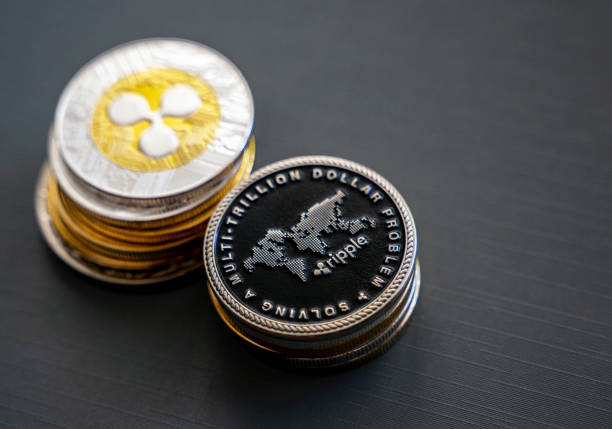What Is Crypto Market Cap and Why It Matters
Note: This post may contain affiliate links, and we may earn a commission (with No additional cost for you) if you make a purchase via our link. See our disclosure for more info. The crypto world is constantly changing. This content is for informational purposes only and not financial, legal, or professional advice So, please verify the info on the cryptocurrency provider’s websites.
You’ve probably heard “market cap” in crypto talks. But do you know what it means? Crypto market cap isn't just a buzzword. It’s a key metric that can influence your investment strategy. As you navigate the volatile world of digital assets, grasping the concept of market capitalization can be your compass, guiding you through the sea of cryptocurrencies. It's not just a number. It’s a key to understanding a coin's potential, stability, and market position. But there's more to this story than meets the eye…
Key Takeaways
- Market cap represents the total value of a cryptocurrency, calculated by multiplying its price by circulating supply.
- It serves as a primary indicator for ranking cryptocurrencies and reflects their popularity and value in the market.
- Market cap categorizes cryptocurrencies into large-cap, mid-cap, and small-cap, helping investors understand risk and potential returns.
- It provides crucial guidance for investors in navigating digital assets and making informed investment decisions.
- Market cap helps assess stability but should be considered alongside other factors like trading volume and fundamental value.
 Crypto Market Cap and Why It Matters" class="wp-image-1697" srcset="https://cryptocurrencybeginner.com/wp-content/uploads/2025/02/Learn-What-Is-Crypto-Market-Cap-and-Why-It-Matters.jpg 1000w, https://cryptocurrencybeginner.com/wp-content/uploads/2025/02/Learn-What-Is-Crypto-Market-Cap-and-Why-It-Matters-300x169.jpg 300w, https://cryptocurrencybeginner.com/wp-content/uploads/2025/02/Learn-What-Is-Crypto-Market-Cap-and-Why-It-Matters-768x432.jpg 768w" sizes="(max-width: 1000px) 100vw, 1000px" />
Crypto Market Cap and Why It Matters" class="wp-image-1697" srcset="https://cryptocurrencybeginner.com/wp-content/uploads/2025/02/Learn-What-Is-Crypto-Market-Cap-and-Why-It-Matters.jpg 1000w, https://cryptocurrencybeginner.com/wp-content/uploads/2025/02/Learn-What-Is-Crypto-Market-Cap-and-Why-It-Matters-300x169.jpg 300w, https://cryptocurrencybeginner.com/wp-content/uploads/2025/02/Learn-What-Is-Crypto-Market-Cap-and-Why-It-Matters-768x432.jpg 768w" sizes="(max-width: 1000px) 100vw, 1000px" />Definition of Market Cap
Almost every cryptocurrency investor has encountered the term “market cap,” but what does it really mean? Market cap, short for market capitalization, is a significant metric in the crypto world. It represents the total value of all mined coins for a specific cryptocurrency.
To calculate market cap, you simply multiply the current price of a single coin by its circulating supply. For example, if a cryptocurrency is priced at $50 and has 10 million coins in circulation, its market cap would be $500 million.
This figure serves as a primary indicator for ranking cryptocurrencies and reflects their popularity and value within the market. Understanding market cap is essential for developing a sound investment strategy.
Market cap helps investors assess a cryptocurrency's:
- Potential for growth
- Stability
- Risk level
Cryptocurrencies are typically categorized based on their market cap:
- Large-cap: Over $10 billion
- Mid-cap: $1 billion to $10 billion
- Small-cap: Under $1 billion
These categories provide insights into the relative size and stability of different cryptocurrencies. By monitoring market cap, you can make more informed decisions about which cryptocurrencies align with your investment goals and risk tolerance.
Calculating Crypto Market Cap
In light of the significance of market cap in cryptocurrency analysis, understanding how to calculate it accurately is fundamental. To calculate market cap, you'll need two key pieces of information: the current price of the cryptocurrency and its circulating supply. Simply multiply these two figures to determine the total value of the cryptocurrency in the market.
For example, if a cryptocurrency is trading at $200 and has a circulating supply of 5 million coins, its market cap would be $1 billion. It's important to use the circulating supply rather than the total supply, as this reflects the coins actually available for trading.
Market cap serves as a essential indicator of a cryptocurrency's size and market dominance. Generally, cryptocurrencies with larger market caps are considered more stable. However, it's important to track market cap regularly, as it can fluctuate due to market volatility and changes in price or circulating supply.
- Accurate calculation: Price x Circulating Supply
- Use circulating supply, not total supply
- Larger market caps often indicate more stability
- Regular tracking is fundamental due to market volatility
Market Cap Categories
As you explore cryptocurrency investments, understanding market cap categories can help you make informed decisions.
Large-cap cryptocurrencies like Bitcoin and Ethereum offer stability and liquidity, while mid-cap options present growth potential with moderate risk.
Small-cap cryptocurrencies, though highly volatile, may provide opportunities for significant short-term gains, but you'll need to carefully weigh the increased risks against potential rewards.

Large-Cap Cryptocurrency Characteristics
Large-cap cryptocurrencies represent the heavyweights of the digital asset world, boasting market capitalizations exceeding $10 billion. These assets, such as Bitcoin and Ethereum, are considered the most established and mature players in the crypto market. Their substantial market presence offers investors a range of benefits, including increased stability and liquidity.
When you're considering investing in large-cap cryptocurrencies, it's important to understand their key characteristics:
- Higher stability: Large-cap assets tend to experience less extreme price fluctuations compared to their smaller counterparts.
- Greater liquidity: These cryptocurrencies are easier to buy and sell without markedly impacting market prices.
- Established market presence: They've proven their longevity and have a track record of surviving market cycles.
- Market trend indicators: Large-cap cryptocurrencies often serve as barometers for overall market health and investor sentiment.
These characteristics make large-cap cryptocurrencies attractive options for long-term investors seeking to minimize risk while maintaining exposure to the crypto market.
Their dominance in the overall market provides valuable insights into broader trends and can help you make informed investment decisions. By understanding the role of large-cap cryptocurrencies, you'll be better equipped to navigate the complex world of digital assets.
Mid-Cap Growth Potential
While large-cap cryptocurrencies offer stability, mid-cap assets present an exciting opportunity for growth-oriented investors. Mid-cap cryptocurrencies, with market caps between $1 billion and $10 billion, strike a balance between potential returns and risk.
Mid-Cap Characteristics:
- Higher volatility than large-caps
- Significant growth potential
- More susceptible to market sentiment
These assets often demonstrate innovative technologies and increasing adoption rates. For example, Chainlink (LINK) and Polygon (MATIC) are mid-cap cryptocurrencies known for their unique solutions and expanding use cases.
Investing in mid-caps requires thorough research due to their increased sensitivity to external factors. However, the potential rewards can be substantial. As these assets grow, they may attract more investor confidence and institutional interest, potentially leading to increased liquidity and value.
Mid-cap cryptocurrencies offer a sweet spot for investors seeking growth opportunities while maintaining a degree of stability. By diversifying your portfolio with carefully selected mid-caps, you can potentially capitalize on emerging trends in the crypto market.
Small-Cap Investment Risks
Small-cap cryptocurrencies often present a double-edged sword for investors seeking high-risk, high-reward opportunities. These assets, defined by a market cap under $1 billion, are known for their extreme volatility and susceptibility to drastic price swings. While they offer the potential for high returns, you must be prepared for significant investment risks associated with their lower liquidity and trading volume.
When considering small-cap cryptocurrencies, it's essential to understand the following factors:
- Heightened volatility: Price fluctuations can be severe, leading to substantial gains or losses in short periods.
- Limited liquidity: Lower trading volumes can exacerbate price movements and make it challenging to execute trades at desired prices.
- Increased vulnerability: Small-cap coins are more susceptible to market manipulation and sudden crashes.
- Less established: These projects often lack the technological backing and user adoption seen in larger-cap cryptocurrencies.
To navigate these risks, you'll need to conduct thorough research before investing. Analyze the project's fundamentals, team, and market potential.
Be prepared for the possibility of rapid price changes and lower trading volumes. While small-cap cryptocurrencies can offer exciting growth prospects, they require a higher risk tolerance and careful portfolio management to mitigate potential losses.

Importance for Investors
Market capitalization serves as an essential compass for cryptocurrency investors. When you're traversing the complex world of digital assets, understanding market cap helps you gauge the relative size and stability of different cryptocurrencies. This metric is vital for making informed investment decisions, as it reflects market sentiment and can change rapidly.
As an investor, you'll want to reflect on the following:
- Large-cap cryptocurrencies (over $10 billion) typically offer more stability
- Mid-cap assets ($1-10 billion) may present higher risk but greater growth potential
- Small-cap cryptocurrencies (under $1 billion) are highly volatile
By comparing market caps, you can assess the potential risks and rewards of different assets. A consistently high market cap often indicates strong adoption and investor confidence, suggesting long-term viability.
However, it's important to remember that market cap fluctuations can greatly impact an asset's perceived stability and attractiveness. Monitoring these changes is vital for adapting your investment strategy.
Small-cap cryptocurrencies, while potentially offering substantial gains, also come with increased risk of losses. By understanding market cap, you can better determine your risk tolerance and make more informed decisions in the volatile crypto market.
Market Cap vs. Price
Understanding the difference between market cap and price is vital when evaluating cryptocurrencies. Market cap represents the total value of a cryptocurrency in the market, calculated by multiplying the price by the circulating supply. Price, on the other hand, refers to the current trading value of a single unit.
For example, if a cryptocurrency has a price of $50 and a circulating supply of 10 million coins, its market cap would be $500 million.
Market cap provides a broader perspective on a cryptocurrency's overall value, while price reflects the value of an individual coin. Here's why market cap matters:
- Stability indicator: A high market cap often suggests a more stable investment
- Adoption metric: Larger market caps may indicate wider adoption and liquidity
- Comparative tool: Helps investors compare different cryptocurrencies' market values
- Volatility gauge: Price fluctuations can greatly impact market cap
When considering investments, it's important to look beyond price alone. Market cap offers insights into a cryptocurrency's potential stability and market presence.
However, remember that market cap can change rapidly due to price volatility. While a high market cap may indicate a more established cryptocurrency, it's not a guarantee of future performance or investment success. Always consider multiple factors when evaluating cryptocurrencies for investment purposes.
Factors Affecting Market Cap
When examining factors that influence crypto market cap, you'll find that price and supply dynamics play an essential role.
The current price of a cryptocurrency directly affects its market cap, as any fluctuation can lead to significant changes in the overall valuation.
Additionally, market sentiment and external news can drastically impact demand, driving prices up or down and consequently altering the market cap.
Price and Supply Dynamics
Two key factors drive a cryptocurrency's market capitalization: price and circulating supply. The market cap is calculated by multiplying these two elements, making both essential in determining a crypto asset's overall value.
For example, a cryptocurrency priced at $50 with 10 million coins in circulation would have a market cap of $500 million.
Price fluctuations can greatly impact market cap. If the price rises to $60, the market cap would increase to $600 million, even with the same circulating supply.
It's vital to recognize that circulating supply differs from total supply, as it only accounts for coins available for trading.
Here's a breakdown of how price and supply dynamics affect market cap:
- Price changes directly influence market cap value
- Circulating supply impacts perceived scarcity and value
- Market sentiment can affect both price and supply
- Trading volume indicates investor interest and stability
Understanding these dynamics is essential for investors, as they provide insights into a cryptocurrency's value and potential growth.

Market Sentiment Impact
Market sentiment wields considerable influence over cryptocurrency market caps, often causing rapid fluctuations in value. This sentiment, driven by news events and social media trends, can greatly impact investor confidence and demand. As a result, you'll notice that market caps can experience substantial shifts in short periods.
Trading volume often correlates with market sentiment, providing insights into investor behavior. High trading volumes typically indicate bullish sentiment, which can stabilize or boost a cryptocurrency's market cap.
For example:
- Positive news, such as major partnerships or technological advancements, can create favorable market sentiment, leading to rapid increases in market cap.
- Conversely, negative news like regulatory crackdowns or security breaches can generate pessimism, causing market cap declines.
Behavioral finance factors play a vital role in shaping market sentiment. Fear and greed, in particular, can drive investment decisions that directly affect cryptocurrency market caps. Understanding these emotional influences is essential for predicting potential market cap fluctuations.
Large-Cap Cryptocurrencies
Giants of the crypto world, large-cap cryptocurrencies stand tall with market capitalizations exceeding $10 billion. These behemoths, like Bitcoin and Ethereum, dominate the market with their impressive valuations of $815.45 billion and $260.95 billion, respectively.
Large-cap cryptocurrencies offer investors a unique blend of stability and potential growth, making them attractive options for those seeking to enter the crypto space.
When considering large-cap cryptocurrencies, you'll find several key advantages:
- Enhanced stability due to larger market caps
- Higher liquidity, allowing for easier buying and selling
- Lower volatility compared to smaller cryptocurrencies
- Greater influence on overall market trends
Investors often view large-cap cryptocurrencies as safer bets for long-term investment strategies. Their established presence in the market provides a buffer against significant price swings, offering a sense of security in the volatile crypto landscape.
Additionally, these cryptocurrencies tend to shape market sentiment and drive broader trends in the industry.
As you explore the world of cryptocurrency investments, understanding the role of large-cap assets is essential. Their market dominance and relative stability make them important players in portfolio diversification and risk management strategies.
Mid-Cap and Small-Cap Coins
Beyond the giants of the crypto world lie mid-cap and small-cap coins, offering a diverse landscape of investment opportunities. Mid-cap cryptocurrencies, with market caps between $1 billion and $10 billion, present a balance of growth potential and risk.
These coins, like Chainlink (LINK), can experience significant fluctuations while still maintaining relative stability compared to their smaller counterparts.
Small-cap cryptocurrencies, defined by market caps under $1 billion, are highly volatile and susceptible to market sentiment. While they can provide substantial short-term gains, they also come with increased risk of dramatic price swings.
Investors often view these coins as high-risk, high-reward propositions.
When considering mid-cap and small-cap investments, it's essential to:
- Conduct thorough research on the project's fundamentals
- Assess the coin's liquidity and market traction
- Implement robust risk management strategies
Remember that smaller market cap coins may face challenges in achieving widespread adoption and maintaining liquidity.
While the potential for growth is significant, so too is the risk of loss. As with any investment, diversification and careful analysis are key to steering through the exciting yet unpredictable world of mid-cap and small-cap cryptocurrencies.
Market Cap Limitations
While market capitalization serves as a quick gauge of a cryptocurrency's size and perceived value, it's important to grasp its limitations. Market cap doesn't account for actual trading volumes, which can impact liquidity and price stability. This oversight can lead to misinterpretations of a cryptocurrency's true value.
Furthermore, market cap can change rapidly due to price fluctuations, potentially misrepresenting a coin's long-term viability.
When evaluating cryptocurrencies, it's significant to reflect on factors beyond market cap alone. Here are four key limitations to keep in mind:
- Market cap doesn't reflect actual trading activity
- Large market caps don't guarantee investment safety
- Small-cap coins are highly susceptible to market sentiment
- Market cap overlooks vital factors like technology and adoption
While market cap can provide a useful starting point for investment evaluations, it shouldn't be your sole criterion.
Cryptocurrencies have market caps that can be misleading, as they don't always correlate with a coin's fundamental value. To make informed decisions, you should take into account additional market data, such as trading volume, developer activity, and real-world use cases.
Using Market Cap in Investing
Despite its limitations, market cap remains a valuable tool for cryptocurrency investors. Market cap, calculated by multiplying a cryptocurrency's price by its circulating supply, provides a snapshot of its total market value and investment potential.
Investors use market cap to categorize cryptocurrencies into three main groups:
- Large-cap cryptocurrencies (over $10 billion)
- Mid-cap cryptocurrencies ($1 billion to $10 billion)
- Small-cap cryptocurrencies (under $1 billion)
This categorization helps you assess risk and expected volatility in the volatile cryptocurrency market. Large-cap cryptocurrencies are often considered safer investments due to their stability and liquidity. Mid-cap and small-cap cryptocurrencies can offer higher growth potential but come with increased risk.
To make informed investment decisions, you should monitor market cap trends alongside trading volume. This approach can help you identify potential entry and exit points in the market.
Remember that a cryptocurrency's market cap can fluctuate considerably with price changes, so it's crucial to regularly assess market conditions and adjust your strategy accordingly.
Frequently Asked Questions
Why Is Crypto Market Cap Important?
Crypto market cap is important because it gives you a clear picture of a cryptocurrency's overall value and position in the market.
It helps you compare different coins, assess their stability, and gauge potential growth. You'll find it useful for making informed investment decisions based on your risk tolerance.
Market cap also indicates a coin's liquidity and market dominance, which can influence investor confidence.
How Much Market Cap Is Good for Crypto?
You might think there's a one-size-fits-all answer, but the “good” market cap for crypto depends on your investment goals and risk tolerance.
Generally, a market cap over $1 billion is considered solid for mid-cap cryptocurrencies, offering potential growth with relative stability.
Large-caps (over $10 billion) are typically seen as safer investments, while small-caps (under $1 billion) offer higher growth potential but come with increased risk.
Should I Buy Crypto With Low or High Market Cap?
You should consider investing in a mix of low and high market cap cryptocurrencies.
High-cap coins offer stability and lower risk, while low-cap coins provide growth potential. Your choice depends on your risk tolerance and investment goals.
High-cap cryptos are generally safer but may offer limited returns. Low-cap coins can yield higher profits but come with increased volatility.
To balance risk and reward, consider diversifying your portfolio across different market cap ranges, including some mid-cap options for a well-rounded approach.
Why Is Market Capitalisation Important?
Market capitalization is essential for you to understand cryptocurrency investments. It helps you:
- Assess a coin's overall value and stability
- Compare different cryptocurrencies effectively
- Gauge market dominance and popularity
- Identify potential growth opportunities
- Understand risk levels associated with various coins
By monitoring market cap, you'll make more informed decisions when diversifying your portfolio.
Remember, larger market caps often indicate greater stability, while smaller caps may offer higher growth potential but with increased risk.
Keep in mind that market caps can fluctuate rapidly, so regular research is essential.

Conclusion
You've learned that market cap is essential in crypto investing, yet it's not the only factor to take into account. While large-cap coins offer stability, small-caps present growth potential. Remember, a high market cap doesn't guarantee success, and a low one doesn't spell doom. By understanding market cap's role and limitations, you're better equipped to navigate the crypto landscape. Use this knowledge alongside other metrics to make informed decisions, balancing risk and potential rewards in your investment strategy.











